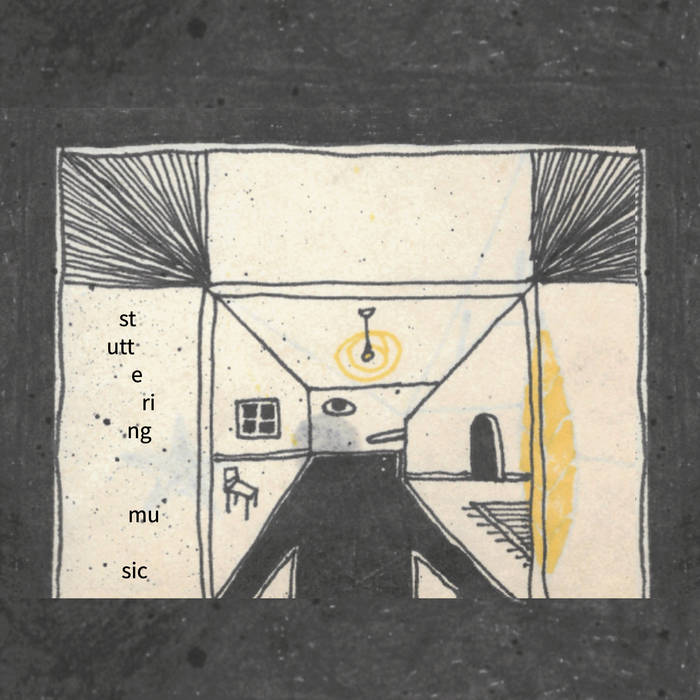A box-shaped musical instrument invented in ninteenth-century Berlin has gained popularity worldwide due to its portability and unique combination of melody keys and bass buttons. This versatility has made it a staple across numerous musical genres and cultures. Over the past century, from the lively sounds of Latin American gauchos to the melodies of French café musicians, and through the vibrant music of Balkan Romas and Klezmer dances, the accordion’s distinct timbre and zestful sound have resonated worldwide. Yara Asmar, a Beirut-based multi-instrumentalist and puppeteer, uses the instrument’s singular qualities as an interlacing element, creating a solid foundation for a rich interplay of acoustic and digital sounds.
Stuttering Music, her latest recording, evokes the trailblazing spirit of this interplay. Like the dreamlike atmospheres in Brian Eno and Harold Budd’s The Pearl or the delicate, vibrant melancholia found in the abstract collaborations of Ryuichi Sakomoto and Alva Noto, here Asmar creates a continuous flow that captures a crouching sense of nostalgia for a more livable life. The album draws heavily from the fusion of accordion and synthesizers innovated by Pauline Oliveros. A groundbreaking electronic composer, Oliveros introduced the accordion into her sonic experiments as early as the 1980s, fundamentally altering how the instrument is used in music.
Asmar’s previous full-lengths, Home Recordings 2018–2021 and Synth Waltzes and Accordion Laments, are also rich with diverse textures and a variety of sonic layers. In the former, recorded at home on cassettes and a mobile phone, she incorporates glockenspiels, bells, tin toys, and tape loops featuring church hymns and birdsong; while the latter gives the accordion a more prominent role. As divergent as these sound blends may seem, Stuttering Music peaks at a new level of coherence in this distinctive electroacoustic brand of hers.
She hits her toolbox of metallophone, synths and accordion to fabricate airborne reverberations in the album. This amalgamation delivers a gaseous compound of soundwaves. Accordion fills the entire space in ‘i am a terrible mathematician (and an even worse clown)’, while in ‘“all that has been seen will have been seen for nothing”’, it’s pedal-distorted. In ‘cold feet and hot air balloons’ the accordion becomes more of a lament with synth waves washing over the shores of its reverb-drenched, elongated notes. High-pitched humming drones and occasional shrieks cut through this softly woven and ghostly acoustic landscape, suggesting the subjective essence of yearning. Asmar’s use of clattering metallophone in ‘there are easier ways to disappear (but I’m only good at this one)’ and ‘may’ also establishes a solid complement to her other beatless tracks. Altogether, the fusion of floating accordion notes, chiming metallophone sounds, and oscillating synths harmonises seamlessly with her ethereal dreamscape – something both deeply nostalgic and hauntingly transient, mirroring Asmar’s exploration of fleeting yet profound emotional states.


